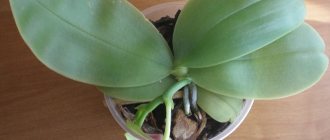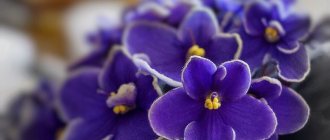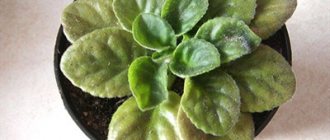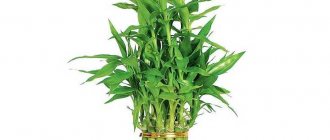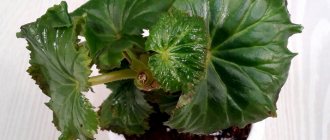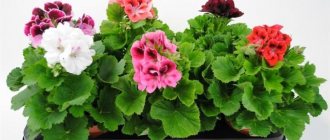Homemade violet is not a fashionable flower, but it is infinitely dear. The plant is a symbol of home, comfort and kinship. It contains our childhood, caring grandparents, and the continuity of the human race.
Scientific name: Saintpaulia. It's hard to imagine, but it was selected from wild violets growing in the African mountains. Its other name is Uzambara violet.
This is not to say that she is difficult to care for. But, as a rule, growing it raises many questions for beginning gardeners.
One of the most common problems is violet leaves curling inward or downward. This phenomenon can be caused by several reasons:
- The indoor air is too dry;
- Draft;
- Excessive watering;
- Pest damage;
- Unsuitable soil for the plant;
- Too much fertilizer.
To save the plant, it is necessary to correctly determine the cause and solve the problem.
Indoor air is too dry
Most often, this problem can be encountered in winter, during intensive operation of heating devices or in very hot summers. Violet loves humidity at 45-50%. And if there is not enough moisture in the air, the plant will look lethargic and the stem will become soft. The leaves will curl.
How to increase air humidity:
- You can purchase a special device to monitor the humidity level in your home. But you can understand that the air in the room is too dry even without a measuring device by your own well-being: a person will feel the need to drink, his hands and lips will dry out, there will be a feeling of stuffiness and a desire to open the window.
- The simplest solution is to buy a humidifier. The device is easy to use and inexpensive. It will easily solve the problem of dry air, which will benefit not only plants, but also people.
- You can solve the problem in another way: place the flower pot on a tray with water or damp sphagnum moss; large tree bark soaked in water will also work.
Fight against cyclamen mite
The mite affects the entire plant: growth stops, stems curl and leaves curl.
It is difficult to save a violet; success can only be achieved at the very beginning, when not the entire plant has been captured by the pest. At the same time, it is important to isolate it from its neighbors on the windowsill, since the pest will very quickly move to other plants.
Draft
If there is a draft in the room and the violet is in the path of cold air, then curling of the leaves may be a consequence of hypothermia.
This reason is the easiest to eliminate. You just need to move the pot with the plant away from the open window.
Special stands with installed lighting for indoor flowers have appeared on sale. This is especially true in autumn and winter, when plants do not have enough sunlight. Such a stand will allow the plant to be located not only on the windowsill, but also in any other place in the house where it will not be oppressed by drafts and there will be sufficient lighting. Uzambara violet can bloom all year round, as long as there is enough light.
Responsibilities of a gardener when caring for violets
Saintpaulia is very easy to grow at home. To keep the plant healthy, you need to pay attention to the following points:
- It is recommended to water the plant from a tray with warm water. You can't let it get on the leaves.
- For a violet to bloom well, you need to provide it with good lighting.
- The air temperature should not be lower than 18 °C.
- Once every two months, violet leaves should be wiped from dust with a soft sponge.
- The soil should contain moss, sand and humus.
Violet is a popular houseplant
The plant needs to be fertilized only in summer and autumn. In winter, he needs a break from excess stress.
The violet must be provided with additional lighting
Overwatering
Inward curled leaves and lethargy of the plant can mislead the grower. The first thought with such symptoms is lack of watering. But the violet does not tolerate excess water in the soil; it is better to slightly underwater it than to overfill it. Excess water is dangerous due to root rot and plant death. The roots are not visible and if you make a mistake, the reason for the loss of the plant may become obvious too late.
Unsuitable soil
Saintpaulia needs light and loose soil with good breathability. The soil should not be heavy so that there is no stagnation of water.
I recommend watching the video (be sure to watch it to the end), you will learn a lot of new things:
The ideal soil for violets is a mixture of coarse sand, peat, humus, pine litter, pieces of charcoal or bark. There is a special soil for the plant on sale.
If the cause is the wrong soil, then it is easy to identify and correct. Unfortunately, sometimes the soil is unscrupulous, but it is absolutely not suitable for the plant.
Saintpaulia is a very responsive and sensitive crop; it will tell you that the soil is not suitable for it within a few days after replanting or initial planting. Lighten the soil with sand or charcoal; you can use expanded clay to replant Saintpaulia.
How to prevent leaves from curling
To prevent sheet plates from curling, follow all necessary preventive measures:
- Choose the right irrigation mode . The presence of drainage holes in the flowerpot is vital for Saintpaulia. Start watering only after the top layer of soil becomes slightly dry to the touch. To prevent water from touching the leaves, pour the liquid into the tray. And 15–20 minutes after the procedure, excess water must be drained.
- Take care of the correct lighting mode - it should be soft and diffused.
- Carefully avoid drafts . The flow of cold air is especially dangerous during the winter months.
- When applying fertilizing, strictly adhere to portions and frequency . When using universal mineral complexes, reduce their dosage by half. Never fertilize newly planted or transplanted Saintpaulias, since all the necessary nutrients are already contained in a special soil mixture for these plants.
- Saintpaulia does not tolerate any manipulation with its roots, so it is not advisable to disturb them unless there is a great need . Valid reasons for replanting are the need to change the container or contaminated soil. Place the newly transplanted plant in a dimly lit place for several days. Also, to facilitate the adaptation period, you can create a greenhouse effect - just cover the flower with a plastic bag. Various immunostimulating drugs, such as Zircon or Epin, have a good effect.
- Regularly inspect the flower for the presence of parasites (mainly cyclamen mites) so as not to waste time and carry out all the measures described above to rehabilitate the plant. If most of the violet is affected, unfortunately, it will not be possible to save it.
Did you know? In the Middle Ages, residents of southern Germany celebrated the day every spring when the first Saintpaulia was found. The flower was attached to a high pole in the middle of a green lawn. Everyone took part in the celebrations - people had fun, sang and danced. It was believed that a happy fate awaited the person who picked this first violet.
Learn how to properly care for your potted violets to keep their leaves healthy. Take timely measures to rehabilitate the plant, and very soon the violet will delight you with new magnificent flowers.
Excess fertilizer
Curling of leaves can cause excess nitrogen and phosphorus.
Fertilizers do not always benefit the plant. There are few rules for using fertilizers, but they exist:
- Do not fertilize too small, young plants;
- Do not feed plants after transplanting into purchased soil (3 months), since it already contains fertilizers;
- Do not fertilize flowers during the dormant period;
- It is forbidden to use fertilizers when the flower is sick;
- Do not pour a solution with vitamins and minerals onto dry soil.
If there is an excess of fertilizers, at best, the flower will become sick: it will become sluggish, the leaves will curl, spots or stains will appear that are unusual for the flower (yellow, burgundy, blue). In the worst case, you can burn the root system.
If there is an excess of fertilizers or a painful reaction to them on the part of Saintpaulia, you can try pouring it with warm water several times so that the water washes away the excess substances, and leave it at rest for 10 days.
If fertilizers have been applied incorrectly or repeatedly, and the Saintpaulia is in a very painful condition, then a transplant will be needed.
Important! If the fertilizer is used for the first time, then first use half the dosage specified in the instructions. After application, it is necessary to observe the reaction of Uzambara violet to mineral substances.
Nitrogen fertilizers are used only in the spring during the period of active growth. Phosphorus and potassium - in the fall or after the end of flowering, but not immediately, but after 2 weeks.
Chlorosis
Owners need to know that the lack of light not only causes the outlet to lose its attractive appearance. In poor lighting for a long time, violets develop chlorosis (iron deficiency). Young leaves become yellow-white, and old leaves become light green. In addition, the leaves die prematurely. The plant is significantly stunted in growth, does not expel flower stalks, and if they appear, they grow thin and weak.
The flowers are pale and small. The plant loses its immunity to diseases and is affected by fungi. In this condition, it is no longer enough to move the flower to a more illuminated place; it must be treated. For this purpose, iron chelate is used.
Pests
The main enemy of Saintpaulia is mites. They are almost invisible to the human eye, but are capable of destroying a flower completely in 2-3 weeks. When curling the leaves inward, you must carefully examine the plant, preferably using a magnifying glass. It is necessary to check the condition of the sheet plates from the inside and outside.
You should be wary if you notice the following signs:
- Rolling leaves inward;
- Feeling of a slight coating on the leaves or excessive pubescence;
- Increased fragility of stems;
- The presence of small dots of any color on the outside or inside of the leaves;
- The spots on the inside of the leaves are usually brown;
- If there are buds, they do not open, but immediately fall off;
- When you feel the leaves, you can feel compactions;
- Stopping plant growth.
If there are 2-3 signs, it is ticks. It is difficult to get rid of these pests, and this can only be done with a mild primary attack. It is necessary to use specialized preparations - Fitoverm, Agrovertin or Neoron. Several treatments will be required.
Getting rid of pests is the most difficult task. It is not easy to cure violet. It is better to try to prevent infection. Use expert advice:
- Keep new plants separate from other indoor flowers in quarantine for 2 weeks;
- Do not place cut roses and Saintpaulias nearby;
- At the slightest sign of disease, carefully inspect the plant in the near future;
- Don't place multiple pots too close to each other;
- If possible, monitor the room temperature, it is advisable that it should not be higher than +25 degrees;
- Humidify the air; ticks love it when it's hot and dry.
Curling of the leaves inward is an important sign for the owner that not all is well with Saintpaulia. And don't ignore this warning. Violet is not capricious, but she really loves attention and care. She will thank you for this with almost continuous flowering and her extraordinary positive and warm energy.
Find out the reasons - go halfway: why violets' leaves curl inward
Photo from the site: homester.com.ua
Despite its truly extremely wide distribution, the violet cannot be called a flower that grows like weeds along the road. In fact, this is a very delicate, fragile, and one might even say, whimsical plant. If the leaves of violets curl inward, then there is definitely some problem that will have to be urgently solved before the plant dies completely. That is, there is no point in shelving it at all and it will definitely not go away on its own; you will have to put in effort and effort so that your delicate beauty comes to life and pleases you with vigorous flowering again.
Need to know
There are varieties of violets whose leaves themselves have a natural turn inward. If you purchased a flower already with similar leaves, then there is no need to worry. If an ordinary plant does not behave as it always does, you will need to find and stop the problem before it leads to its death.
This means that if the plant stood calmly on your stand, its leaves were even and smooth, but suddenly it turned out that the violet’s leaves were curling downwards, then there is definitely a problem and there could be a variety of reasons for this. Let's look at the most popular and common problems that cause this “behavior” of the flower.
Three reasons why violet leaves curl:
Photo from the site: flowersweb.info
- The most common reason why your pet's previously smooth, even leaves begin to curl down, giving it a strange and bizarre appearance, is excessive watering. That is, in fact, it is simply an excess of moisture in the soil where the flower grows. Moreover, you should definitely understand that a lot of water is no better than a little, there should be exactly as much water as needed, and then the violet will feel good and delight with beautiful flowers. Excessive watering will only allow the roots to rot and also disrupt the entire metabolism of the plant.
- You should also not think that fertilizers are only beneficial. In fact, violet leaves curl also because the soil in which it is planted is unusually rich in nitrogen. The fragile plant is unable to bear this, so it curls its leaves and then dies completely. You should always carefully select the soil for violets, informing the seller that this is what you are going to plant. Incorrectly selected soil can kill all the beauty and it will be a pity, so you should be more careful.
- The terrible and dangerous cyclamen mite can also cause violet leaves to curl. This pest insect is absolutely tiny, and it will be simply impossible to examine it without special equipment. Moreover, the damage usually occurs on the back, lower side of the leaf, which curls inward, and the leaf itself seems to be covered with a layer of dust that does not want to be washed off.
Thus, it turns out that the reasons are not so complicated, and two of them can be accurately diagnosed by yourself, and it is also not a problem to detect a tick. But once you find out the reason, you need to take action, because the plant is so delicate that it can die in two or three days, without giving any chance of recovery and revival. So what to do in each specific case, how to deal with the negative consequences of various factors-indicators, how to give the violet a real chance for normal growth and flowering? Let's try to answer together.
